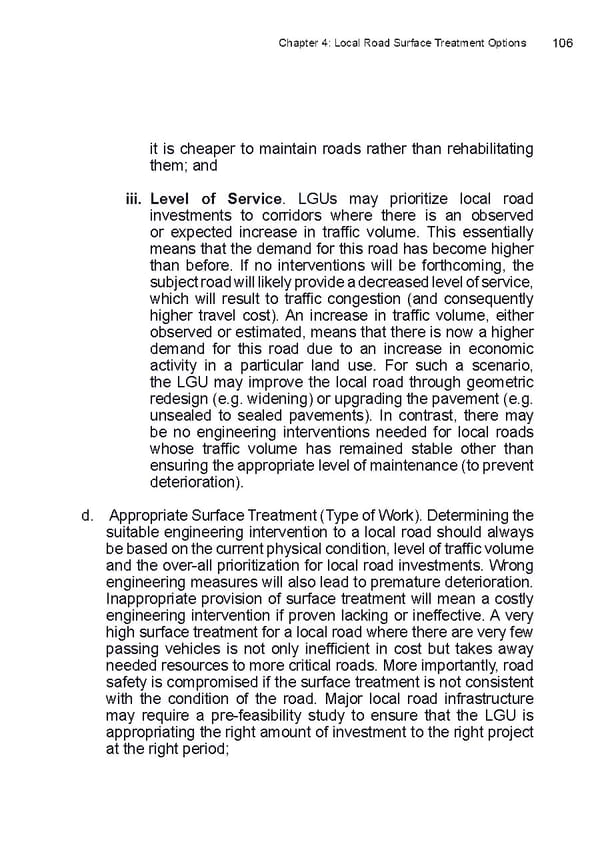Chapter 4: Local Road Surface Treatment Options 106 it is cheaper to maintain roads rather than rehabilitating them; and iii. Level of Service. LGUs may prioritize local road investments to corridors where there is an observed or expected increase in traiffc volume. This essentially means that the demand for this road has become higher than before. If no interventions will be forthcoming, the subject road will likely provide a decreased level of service, which will result to traiffc congestion (and consequently higher travel cost). An increase in traiffc volume, either observed or estimated, means that there is now a higher demand for this road due to an increase in economic activity in a particular land use. For such a scenario, the LGU may improve the local road through geometric redesign (e.g. widening) or upgrading the pavement (e.g. unsealed to sealed pavements). In contrast, there may be no engineering interventions needed for local roads whose traiffc volume has remained stable other than ensuring the appropriate level of maintenance (to prevent deterioration). d. Appropriate Surface Treatment (Type of Work). Determining the suitable engineering intervention to a local road should always be based on the current physical condition, level of traiffc volume and the over-all prioritization for local road investments. Wrong engineering measures will also lead to premature deterioration. Inappropriate provision of surface treatment will mean a costly engineering intervention if proven lacking or ineffective. A very high surface treatment for a local road where there are very few passing vehicles is not only ineiffcient in cost but takes away needed resources to more critical roads. More importantly, road safety is compromised if the surface treatment is not consistent with the condition of the road. Major local road infrastructure may require a pre-feasibility study to ensure that the LGU is appropriating the right amount of investment to the right project at the right period;
 LRM Manual CMGP Page 105 Page 107
LRM Manual CMGP Page 105 Page 107